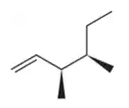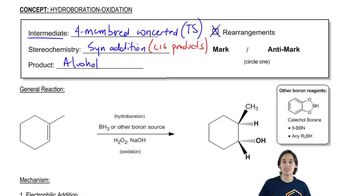For the alkynes shows here, show the product(s) expected to form when treated under the following conditions: (ix) Br2 (2 equiv.). If you expect two products, show both.
(f)

 Verified step by step guidance
Verified step by step guidance Verified video answer for a similar problem:
Verified video answer for a similar problem:



 2:15m
2:15mMaster Double halogenation of alkynes. with a bite sized video explanation from Johnny
Start learning